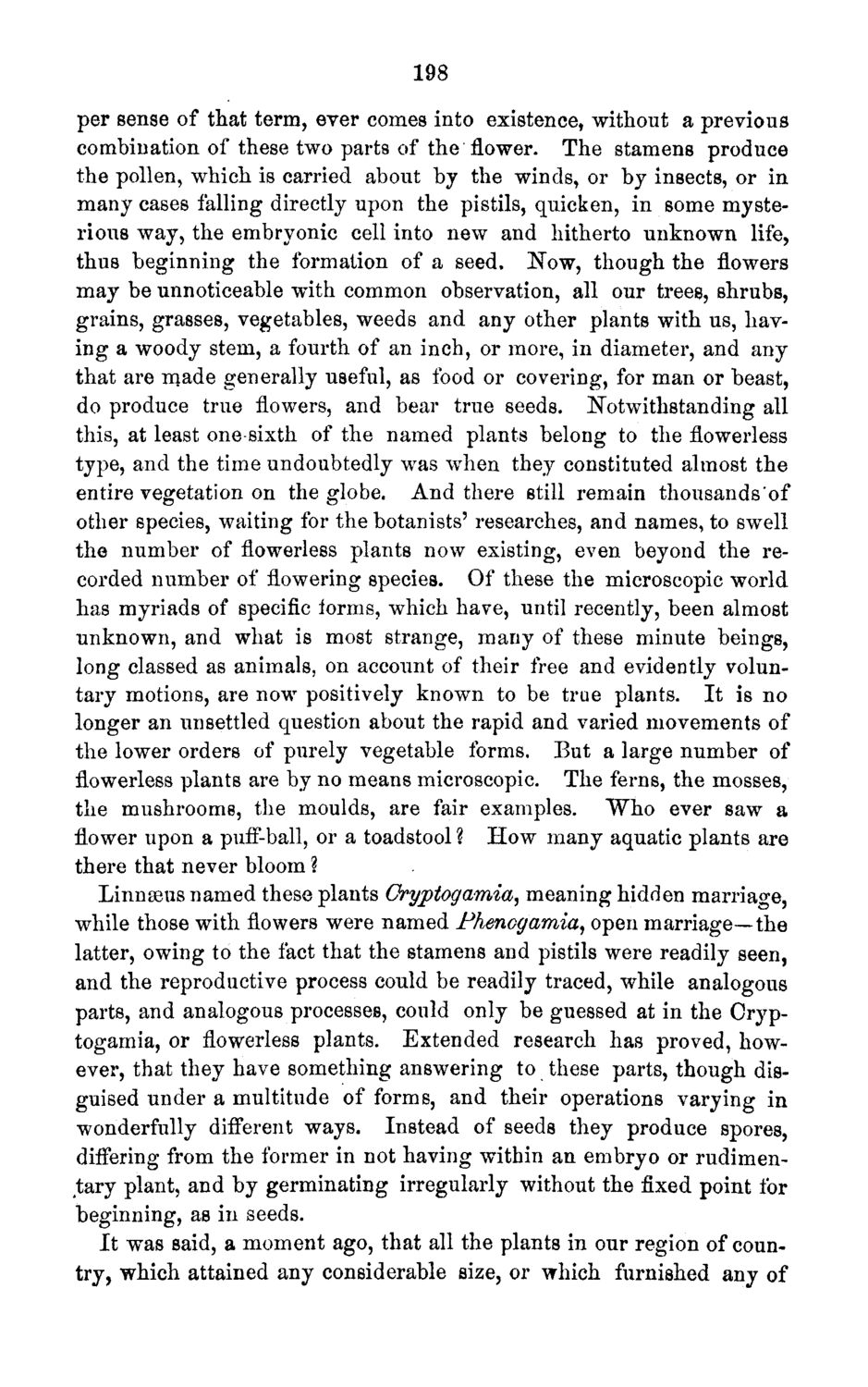| |
| |
Caption: Board of Trustees Minutes - 1871
This is a reduced-resolution page image for fast online browsing.

EXTRACTED TEXT FROM PAGE:
198 per sense of that term, ever comes into existence, without a previous combination of these two parts of the flower. The stamens produce the pollen, which is carried about by the winds, or by insects, or in many cases falling directly upon the pistils, quicken, in some mysterious way, the embryonic cell into new and hitherto unknown life, thus beginning the formation of a seed. Now, though the flowers may be unnoticeable with common observation, all our trees, shrubs, grains, grasses, vegetables, weeds and any other plants with us, having a woody stem, a fourth of an inch, or more, in diameter, and any that are rnade generally useful, as food or covering, for man or beast, do produce true flowers, and bear true seeds. Notwithstanding all this, at least one-sixth of the named plants belong to the flowerless type, and the time undoubtedly was when they constituted almost the entire vegetation on the globe. And there still remain thousands'of other species, waiting for the botanists' researches, and names, to swell the number of flowerless plants now existing, even beyond the recorded number of flowering species. Of these the microscopic world has myriads of specific iorms, which have, until recently, been almost unknown, and what is most strange, many of these minute beings, long classed as animals, on account of their free and evidently voluntary motions, are now positively known to be true plants. It is no longer an unsettled question about the rapid and varied movements of the lower orders of purely vegetable forms. But a large number of flowerless plants are by no means microscopic. The ferns, the mosses, the mushrooms, the moulds, are fair examples. Who ever saw a flower upon a puff-ball, or a toadstool ? How many aquatic plants are there that never bloom ? Linnaeus named these plants Cryptogamia, meaning hidden marriage, while those with flowers were named Phenogamia, open marriage—the latter, owing to the fact that the stamens and pistils were readily seen, and the reproductive process could be readily traced, while analogous parts, and analogous processes, could only be guessed at in the Cryptogarnia, or flowerless plants. Extended research has proved, however, that they have something answering to these parts, though disguised under a multitude of forms, and their operations varying in wonderfully different ways. Instead of seeds they produce spores, differing from the former in not having within an embryo or rudimentary plant, and by germinating irregularly without the fixed point for beginning, as in seeds. It was said, a moment ago, that all the plants in our region of country, which attained any considerable size, or which furnished any of
| |